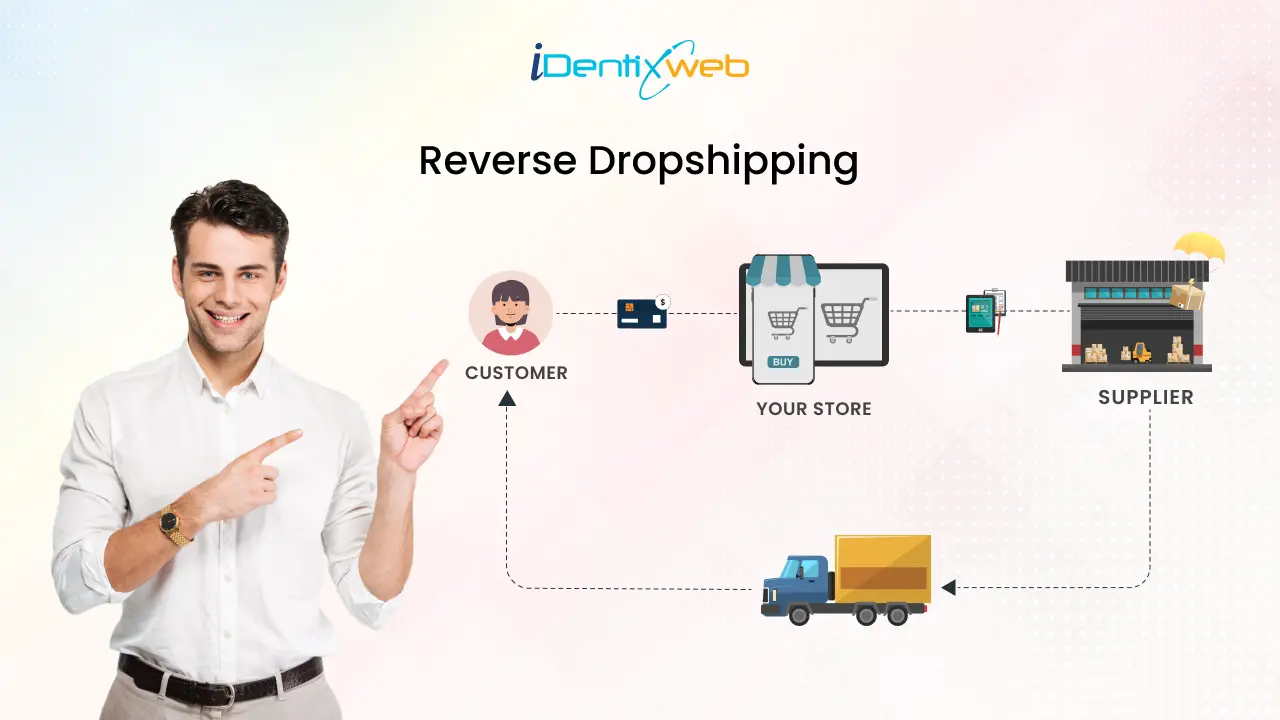
Are you interested in reverse dropshipping? Our research shows that 82% of dropshipping stores fail within their first year, mainly because they sell the same products, creating a highly competitive and oversaturated market.
But there’s a better way. Whether you are new to e-commerce or seeking a fresh strategy, this guide will help you explore the reverse dropshipping business model and why it might be your key to success.
What is Reverse Dropshipping
Reverse dropshipping flips the traditional dropshipping model. Instead of selling low-cost, mass-produced goods from countries like China to developed markets, it focuses on sourcing premium, niche, or high-quality products from developed countries and selling them to customers in emerging markets.
For example, a UK business could source organic teas or artisan chocolates from local producers and sell them to customers in growing markets like India or Brazil, where demand for high-quality products is rising.
According to Statista, the global middle class is projected to reach 5.5 billion people by 2030, with the largest growth occurring in emerging markets like India, China, and Brazil. This shift is driving a surge in demand for premium products, making reverse dropshipping an attractive business opportunity. The e-commerce market is on a strong upward trajectory, with a projected CAGR of 18.9% from 2024 to 2030, reaching USD 25.93 trillion by 2030.
Benefits of Reverse Dropshipping For Businesses
You may not be familiar with reverse dropshipping, but it can greatly benefit your business. Here are the key benefits:
Higher Profit Margins
By focusing on premium products, you can charge higher prices and earn better profit margins than traditional dropshipping with low-cost goods. According to a study, the global luxury goods market is expected to reach $495.20 billion by 2025, showing an increasing demand for premium products.
Example: You could source high-quality perfumes from France and sell them at a premium to affluent customers in South Africa.
Tapping Into Emerging Markets
Emerging markets have a growing middle and upper class with increasing purchasing power. This model helps you meet the rising demand for premium products among these customers.
Example: You could export gourmet organic chocolates from Australia to urban customers in India who value imported, high-quality confectionery.
Reduced Competition
Since reverse dropshipping focuses on niche, high-quality products, you will face less competition than traditional dropshipping, which is often crowded.
Example: Selling handmade leather goods in Vietnam could give you an edge, as the market for such products may have few competitors offering similar quality.
Brand Credibility
By selling premium products, you can build a trustworthy brand that appeals to quality-conscious consumers.
Example: A US skincare brand could gain loyal customers in the UAE by focusing on the quality and exclusivity of its products.
Customizable Niche Opportunities
You can target specific customer segments by offering niche categories like organic food, luxury cosmetics, or premium gadgets.
Example: A UK company could export limited-edition tech gadgets to tech enthusiasts in Brazil willing to pay for exclusivity.
How to Start a Reverse Dropshipping Business
Consider the following steps when starting your business:
1. Market Research
The first step is identifying target dropshipping markets with a growing demand for high-quality products. Researching local preferences, purchasing power, and competition within these markets is essential. This helps you understand the market dynamics and ensure that there is a demand for premium products in these regions.
For example, an Australian entrepreneur may conduct in-depth market research in Vietnam and discover a rising demand for premium coffee blends. This insight allows them to make informed decisions about the types of coffee products to offer and understand the purchasing habits of potential customers.
2. Find Reliable Suppliers
Once you have identified the right market, the next step is finding reliable suppliers to provide the premium products you want. Partnering with reputable manufacturers or wholesalers from developed countries ensures that the products you offer are of high quality and can meet the expectations of your target customers.
For example, a Canadian business may collaborate with a local organic skincare brand in Canada to export their premium products to the Middle East. This partnership ensures that the skincare products are made with the highest quality organic ingredients, which appeals to consumers in the Middle East who value natural and high-end beauty products.
3. Set Up an Online Store
After securing reliable suppliers, the next step is setting up an online store where customers can browse and purchase your premium products. Platforms like Shopify, WooCommerce, and BigCommerce are excellent tools for creating professional e-commerce websites. The design and layout of the website must reflect the quality and exclusivity of the products you are selling.
For example, a French company might set up a Shopify store to sell artisanal cheeses to customers in Brazil. The website would emphasize the quality of the cheeses and the heritage behind their production, which makes them highly desirable in the Brazilian market. Further, the company could also launch a mobile app using a Shopify Mobile app builder, allowing Brazilian customers to order seamlessly and subscribe to monthly cheese boxes with just a few taps.
4. Optimize Logistics
You must optimise logistics to ensure your products reach customers promptly and safely. If you have a small service area with delivery volumes, you can consider in-house delivery, and optimize routes using solutions like delivery routing software. However, for large-scale delivery operations over a vast area, you can collaborate with international shipping companies like DHL, FedEx, or UPS to provide secure and efficient delivery options. Reliable logistics partners can help streamline the shipping process, reduce delays, and enhance the customer experience.
For example, a UK-based exporter of handcrafted pottery might partner with DHL to ensure that its delicate products are delivered safely to customers in India. By working with trusted shipping companies, businesses can offer international customers peace of mind that their premium products will arrive on time and in perfect condition.
5. Marketing Strategy
A strong marketing strategy is crucial to attracting and retaining customers in emerging markets. One effective way to market your products is through social media advertising, targeting affluent customers more likely to invest in high-quality goods.
For example, an American brand selling luxury candles may collaborate with influencers in the Philippines to promote their high-end candles. The brand can attract customers who value premium home decor items by showcasing the product’s luxury, craftsmanship, and exclusivity.
6. Customer Support
Providing excellent customer service is a key factor in building a strong brand reputation, especially when selling in international markets. Clear communication, easy returns, and multi-language support will ensure customers feel supported throughout their purchasing journey.
For example, a German exporter of high-end kitchenware might offer multi-language customer support for clients in Latin America. This enables the business to cater to diverse customer needs and ensure that any issues are promptly addressed. Excellent customer service enhances customer satisfaction and helps build long-term loyalty.
Wrapping Up
Now, have you explored this guide? It offers a unique and profitable opportunity for e-commerce businesses. As a reverse dropshipper, you can focus on selling premium products from developed countries to emerging markets, tapping into growing demand with less competition.
To succeed, start with the dropshipping reverse search, select reliable suppliers, optimize your online store, and create a solid marketing strategy. With less saturation and higher profit margins, reverse dropshipping could be your business’s competitive edge to thrive. Start your journey today as a reverse dropshipper!
FAQs
1. Is reverse dropshipping legal?
Yes, reverse dropshipping is legal if businesses follow international trade laws, customs rules, and product safety standards in their target markets.
2. What types of products are best for reverse dropshipping?
Luxury goods, organic products, premium gadgets, handmade items, and niche products with high perceived value are ideal for this.
3. How do I handle shipping and customs?
Partner with experienced international shipping companies and ensure your products comply with the customs regulations of the target market. Use customs brokers if needed.
4. What are the best platforms for reverse dropshipping?
Shopify, WooCommerce, and BigCommerce are popular platforms for setting up businesses due to their scalability and flexibility.


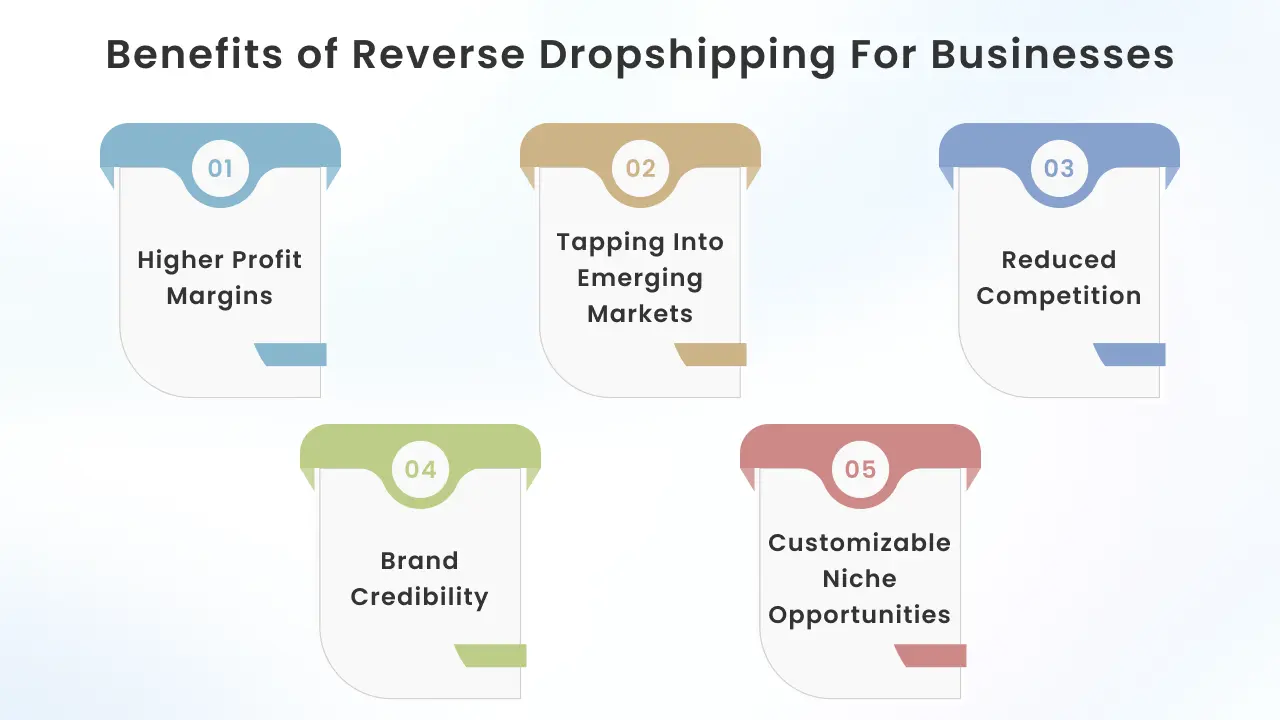
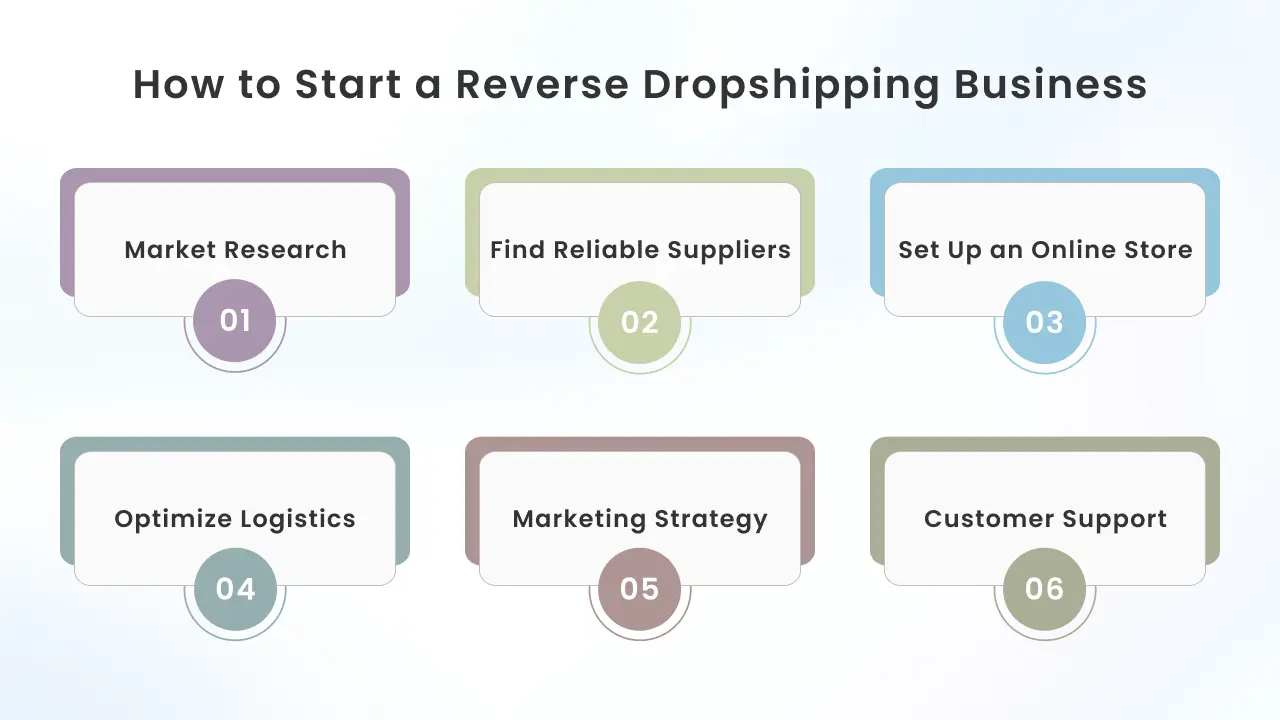

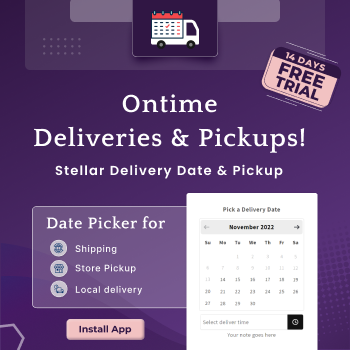


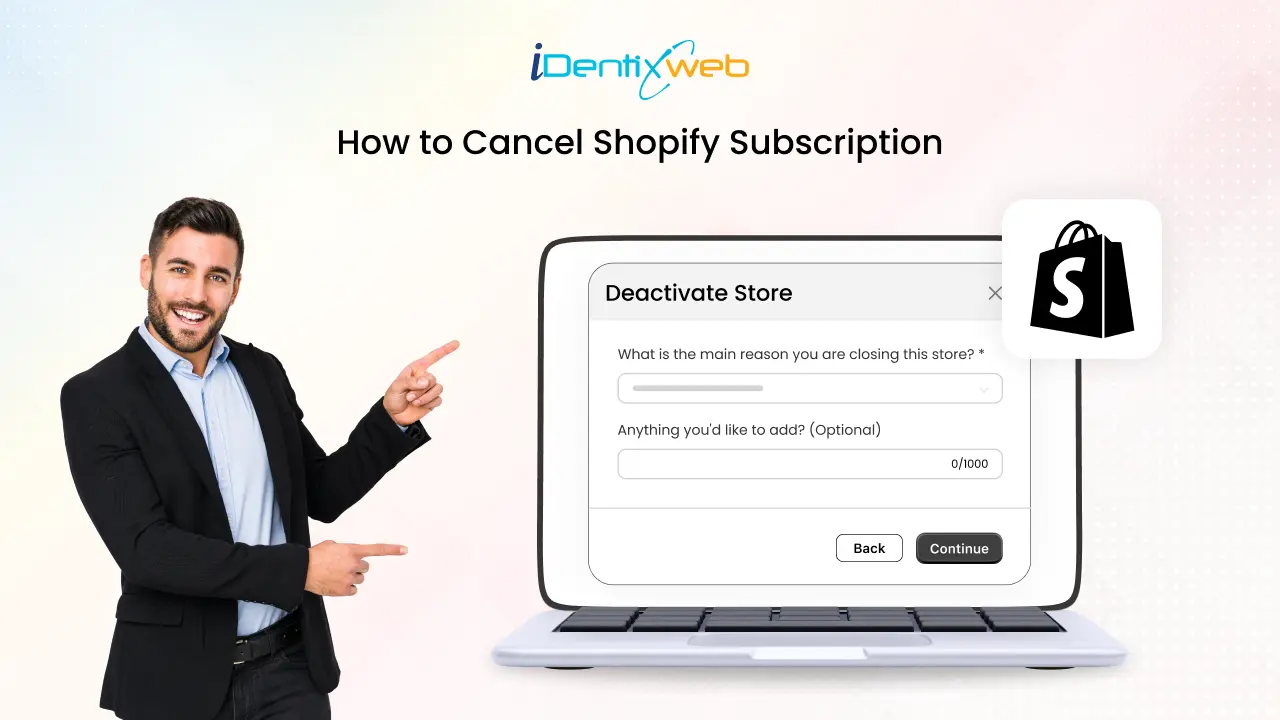
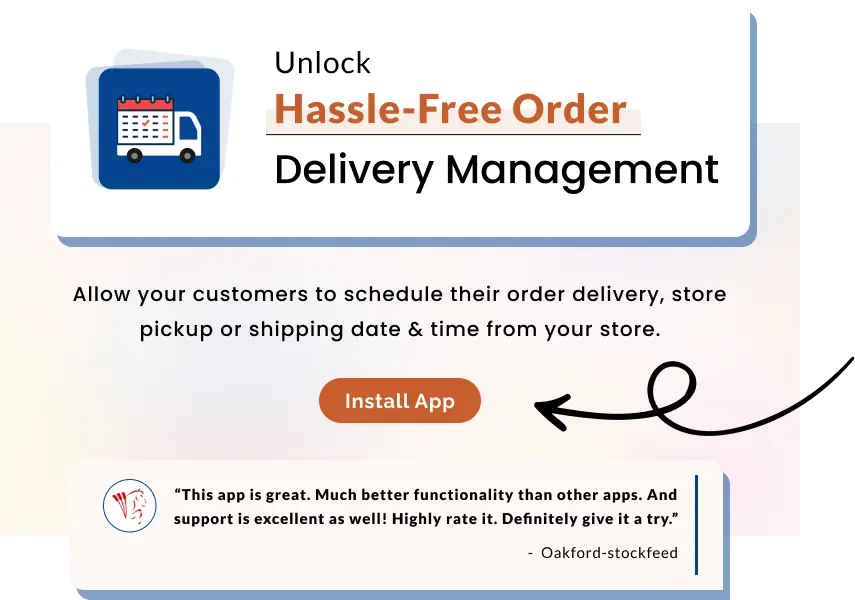
About the author
Bhavesha Ghatode
Explore Content with Bhavesha, a passionate and dedicated technical content writer with a keen understanding of e-commerce trends. She is committed to sharing valuable insights, practical assets, and the latest trends that can help businesses thrive in a competitive environment.